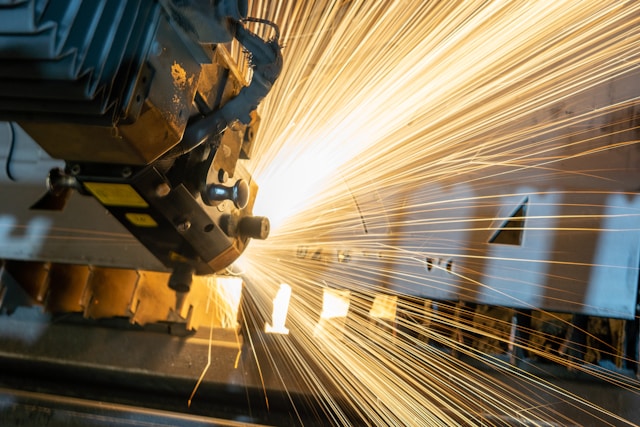
Key Takeaways
- Machine vision integration empowers manufacturing with unparalleled consistency and accuracy in production.
- The adoption of machine vision technology can increase production throughput and operational efficiency.
- Incorporating machine vision can significantly reduce production downtime and related costs.
- Worker safety and ergonomics are drastically improved through the implementation of machine vision systems.
- Machine vision facilitates data-driven decisions, leading to continuous improvement and optimization of manufacturing processes.
- Machine vision makes enhanced traceability and supply chain integration possible, ensuring product quality and compliance.
Table of Contents
- Introduction
- Enhanced Accuracy and Consistency
- Increased Throughput and Efficiency
- Reduced Downtime and Maintenance
- Improved Worker Safety and Ergonomics
- Data-Driven Decisions and Process Optimization
- Supply Chain Integration and Traceability
- Conclusion
Integrating machine vision into manufacturing processes symbolizes a potent catalyst for the industrial revolution, enabling leaps in the accuracy, efficiency, and safety of production lines. By their ability to perform complex visual inspections and automate tasks, machine vision systems bring forth transformative changes, shaping the future of manufacturing. With the inclusion of intelligent cameras and analytics, these systems enhance product quality and position manufacturers to thrive in an increasingly competitive and technology-driven market.
Enhanced Accuracy and Consistency
The cornerstone of machine vision’s impact on manufacturing lies in its ability to deliver consistently accurate results. Unlike human inspectors, machine vision systems do not succumb to fatigue and are immune to the subjective variations that can lead to inconsistency in product inspection. They maintain the same high level of precision throughout long production runs, ensuring that every product, from the first to the last, meets strict quality standards. Such reliability is paramount in industries where precision is non-negotiable, effectively reducing error rates and mitigating the risk of costly recalls or customer dissatisfaction. Machine vision integration also enhances production efficiency by automating inspection processes, leading to faster throughput and reduced labor costs. Additionally, it improves product quality by detecting defects with high precision, ensuring compliance with rigorous standards, and enhancing customer satisfaction.
Increased Throughput and Efficiency
Machine vision’s most significant advantage is its ability to enhance production speed. By integrating these systems, manufacturers can extend production capabilities without sacrificing quality. Machine vision systems can inspect parts and assemblies at a pace far exceeding human capabilities, minimizing bottlenecks and increasing throughput. This heightened efficiency not only drives higher outputs but also contributes to a more dynamic and adaptable production environment where changes in demand can be met with agility and confidence.
Reduced Downtime and Maintenance
Unexpected downtime in manufacturing can lead to a substantial loss in productivity and profitability. Integrating machine vision can preemptively identify potential issues before they escalate into major problems, allowing preventative maintenance routines to be deployed more effectively. By recognizing defects, discrepancies, or wear in machinery, these systems can provide crucial alerts, enabling corrective measures to be taken without significant interruption to production. This foresight is essential in cultivating leaner manufacturing processes and achieving higher utilization of assets.
Improved Worker Safety and Ergonomics
Machine vision systems contribute significantly to the safeguarding of employees in manufacturing settings. By taking over repetitive, strenuous, or hazardous inspection tasks, they minimize the necessity for human involvement in potentially dangerous situations. This helps reduce workplace injuries and improves overall ergonomics, improving employee health and morale. Manufacturers can create a more secure and compliant working environment with machine vision taking the lead on safety-critical responsibilities.
Data-driven decisions and Process Optimization
The analytical capabilities of machine vision systems generate a wealth of data that can be harnessed to make informed decisions about manufacturing processes. This information is the foundation for continual improvements, allowing managers to fine-tune workflows, enhance product designs, and optimize resource allocation. Over time, the accumulation of data facilitates a deeper understanding of the entire production process, leading to strategic adjustments that drive productivity gains and cost savings.
Supply Chain Integration and Traceability
Due to increasing regulatory demands and a greater focus on product authenticity, traceability has become a critical aspect of modern manufacturing. Machine vision systems enable real-time tracking of products through every stage of production and beyond, providing a transparent and audit-friendly record. This level of supply chain visibility ensures compliance with industry standards and regulations while also providing manufacturers with insights into potential inefficiencies or bottlenecks within their supply chain networks.
Conclusion
Machine vision integration is a revolutionary force in manufacturing, providing many benefits that can lead to profound improvements in production quality, efficiency, and safety. As manufacturers continue to seek competitive advantages, adopting machine vision technologies will likely accelerate, driven by the demand for increased automation and data-centric production strategies. As this technology evolves, its role in the future of manufacturing is poised to grow, solidifying its status as an essential component of the fourth industrial revolution.




More Stories
Understanding the Importance of Regular Electrical Maintenance in Homes
The Evolution and Impact of Graphic Design in Business Communications
Understanding Personal Injury Law: A Comprehensive Guide to Your Legal Rights and Obligations